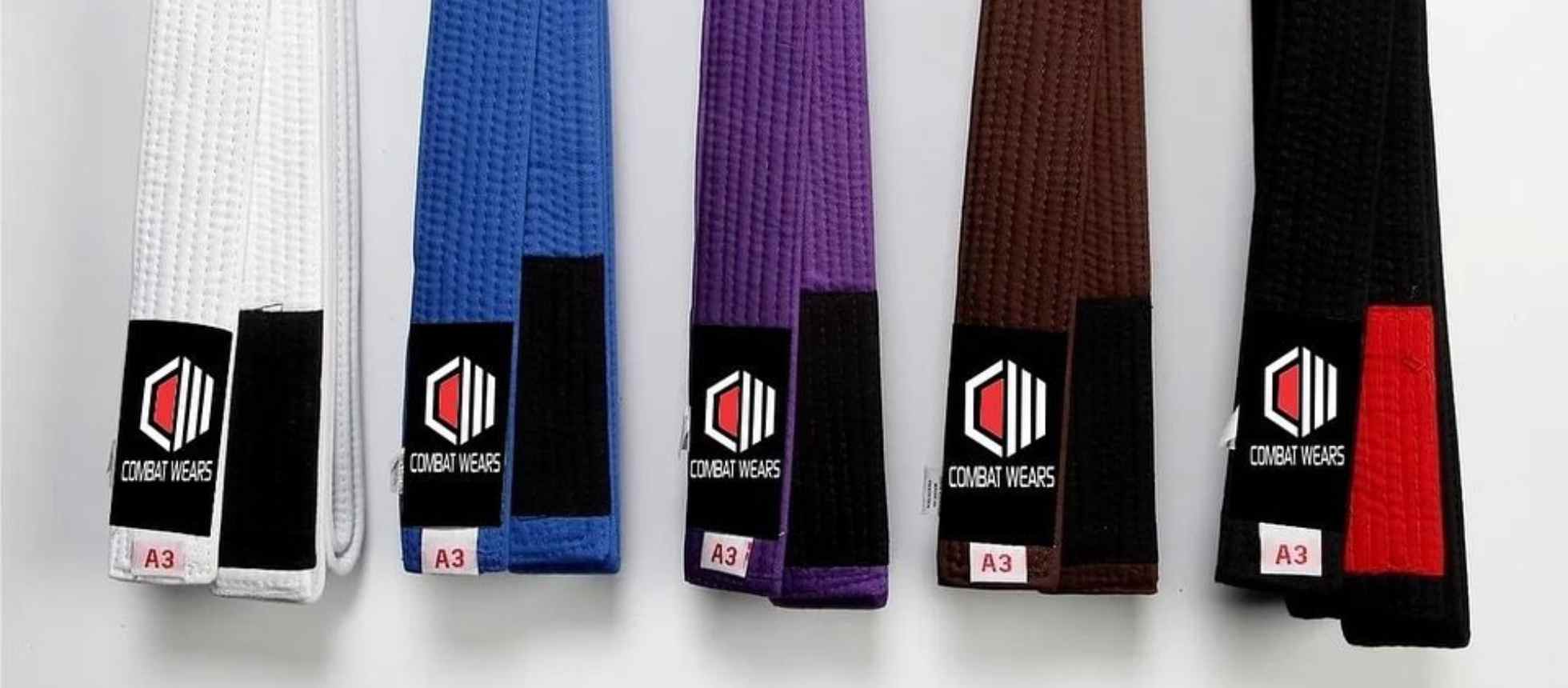The International Brazilian Jiu-Jitsu Federation (IBJJF) belt ranking system is considered as the standard for most BJJ academies worldwide. It is a method of measuring an individual’s progress in the martial art and provides a way for students to set goals and work towards the next rank.
Originally, colored belts were used to distinguish instructors from students, but as BJJ evolved, providing a measurable progress record to students became a recognized benefit.
The IBJJF Belt System: Understanding the Basics
All students start as a white belt, regardless of age or experience. After that, the ranking system diverges for students depending on age, and the next belt they reach will be different for children and adults.
Children’s Belt Ranking System
For children under 16, they have twelve different belts available to them after the white belt. However, none of these belts can be carried over after that age. The belts are grey, yellow, orange, and green. Each of these colors has three subdivisions, a solid color, a color with a white stripe running through it, and a color with a black stripe running through it.
The three grey belts are available from the age of 4, three yellow belts from the age of 7, three orange belts from the age of 10, and three green belts from the age of 13. There are no time requirements at any of the children’s belts, so progress rates will vary quite widely between gyms and individual students.
How to Get to BJJ Blue Belt
The blue belt is available to students at the age of 16. For any children reaching that age who already hold any rank above white belt, they must be automatically promoted to blue belt.
There is no minimum time required before reaching the rank of blue belt, and for many experienced wrestlers and Judoka, they will likely receive a blue belt very quickly.
However, for students starting as adults, this will likely take around two years, depending on how often they train and how quickly they learn.
How to Get to BJJ Purple Belt
The purple belt is only available to students at the age of 16 and 17. Those who have previously held the green belt can move immediately to this rank upon turning 16. However, this is rare, with the majority being promoted to blue belt.
For students to reach the purple belt before they turn 18, there is no minimum time requirement for them to remain a blue belt. However, for adults over the age of 18, they must spend a minimum of two years at the rank of blue belt, unless they have won an IBJJF world championship at that rank.
How to Get to BJJ Brown Belt
Brown belt is only available to those over the age of 18 and is the first rank in the IBJJF system that has a minimum time requirement.
All students must spend a minimum of one year at the purple belt before being promoted to brown belt.
The only exception is for those that have won an IBJJF world championship at that level. Brown belt is also the final coloured belt rank in the system before the black belt.
How to Get to BJJ Black Belt
The black belt is often considered the pinnacle of achievement in BJJ. It is the highest belt one can achieve in the IBJJF ranking system and denotes a mastery of the art. To achieve this rank, one must have spent a minimum of 31 years of age and a minimum of six years as a brown belt.
However, these are not strict requirements, and many individuals have achieved the black belt at a younger age with fewer years spent at the brown belt.
The full list of requirements surrounding the IBJJF belt ranking system for BJJ can be found on their official website.



